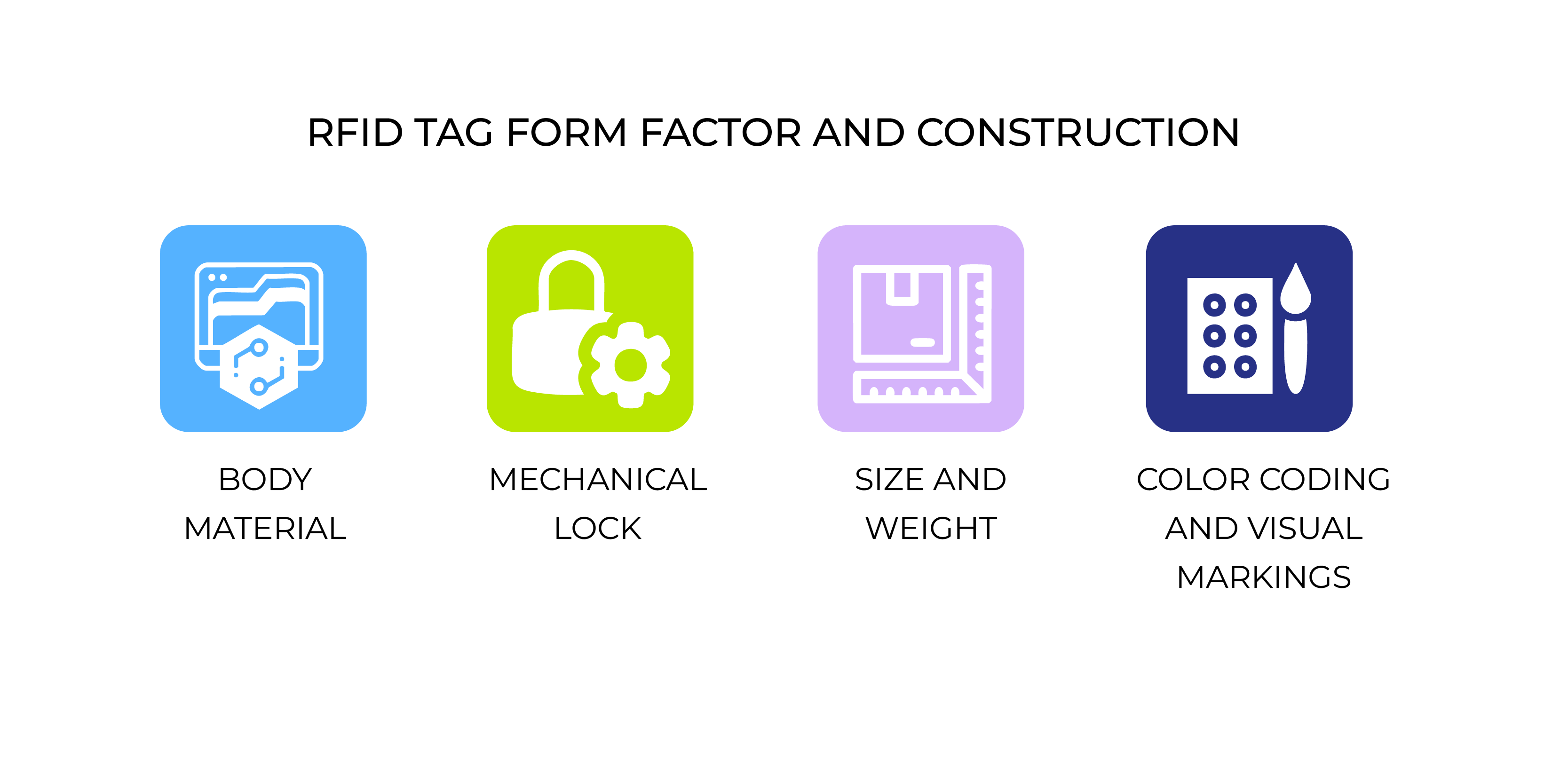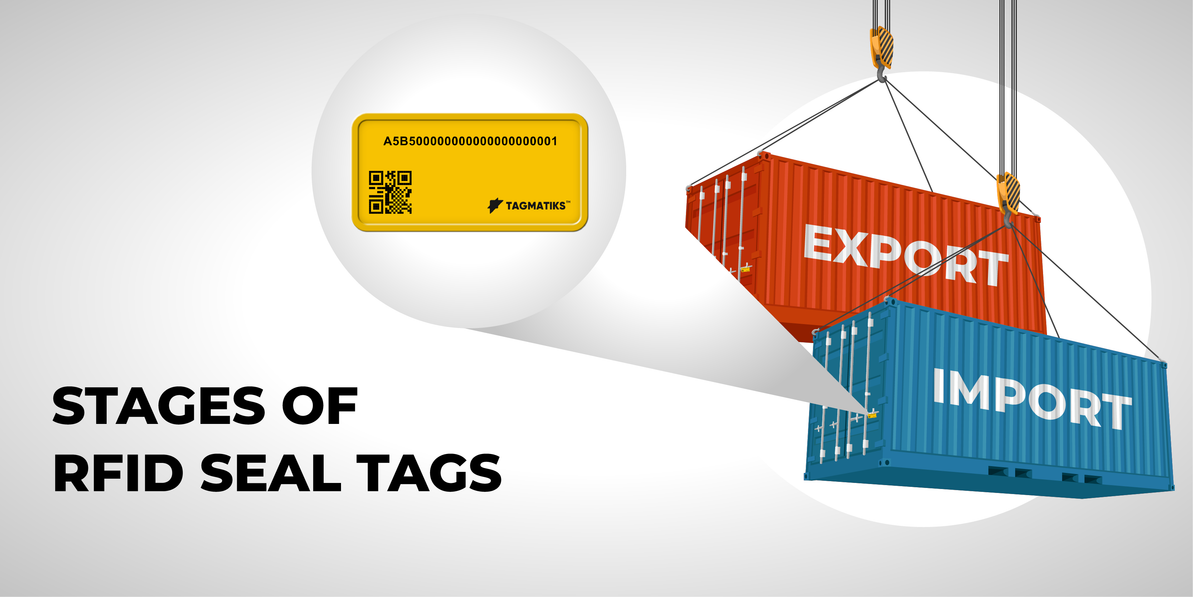Stages of RFID Seal Tags: From Manufacturing to Application
Radio Frequency Identification (RFID) technology has revolutionized supply chain management, asset tracking, and security verification across industries. One specific category of RFID tags that plays a critical role in tamper detection and cargo/container security is the RFID Seal Tag. Unlike standard RFID tags, seal tags combine electronic identification with a mechanical locking mechanism to create a tamper-evident, secure, and traceable seal.
This article explores the complete lifecycle of RFID Seal Tags, detailing every stage from concept and design to end-of-life handling. Understanding these stages is essential for manufacturers, security agencies, logistics companies, customs authorities, and any organization dealing with high-value or sensitive shipments.
Conceptualization and Design Stage
The first stage in the lifecycle of RFID seal tags begins with conceptualization and engineering design. This phase is vital to ensure the tags meet both the functional and regulatory requirements of the industry they will serve.
a. Use Case Identification
Before design starts, it's critical to identify:
- Industry application: Logistics, defense, pharma, energy, customs, etc.
- Environmental factors: Moisture, temperature, electromagnetic interference.
- Security level: Basic tamper detection or high-security sealing.
- Tag reuse or disposability.
b. Tag Form Factor and Construction
Design considerations include:
- Body Material: ABS plastic, polycarbonate, or reinforced polymers for ruggedness.
- Mechanical Lock: Cable ties, bolt seals, or latch mechanisms.
- Size and Weight: Small enough to be versatile, large enough for durability.
- Color Coding and Visual Markings: For easy manual identification.
c. RFID Technology Selection
Choosing the right RFID tech is crucial:
- Frequency Band:
- UHF (860-960 MHz) for long-range tracking.
- HF (13.56 MHz) for secure encryption and proximity-based access.
RFID Inlays and Chips
RFID Chip - Select appropriate chip as per use case (eg, NXP, Impinj)
RFID Inlays
- Pre-manufactured sourced from RFID Inlay manufacturers
- Custom-designed RFID inlay as per use case
d. Tamper Detection Features
Mechanical and electronic tamper evidence:
- One-time locking mechanism.
Manufacturing and Assembly Stage
At this point, the RFID seal tag starts to take physical form.
a. Injection Molding and Housing Production
- The plastic housing is molded with cavities for the RFID inlay, locking parts, and wire passage.
- Color and logo printing or laser engraving is done.
b. RFID Inlay Embedding
- The inlay is securely placed and bonded inside the housing.
c. Locking Mechanism Integration
- Seal cables or bolts are inserted and configured.
- One-way locking gears are added to ensure tamper resistance.
d. Initial Quality Testing
- Mechanical tests: pull strength, vibration, and drop.
- RFID tests: Read range, memory access, response latency.
- Tamper tests: Cut resistance, forced separation.

Programming and Encoding Stage
At this stage, the seal tags are electronically configured for their intended application.
a. Tag Initialization
- Each chip is written with a unique EPC code, batch number, and custom user memory.
- Passwords or encryption may be added for secure applications.
b. Custom Encoding
- Supply chain metadata like destination, container ID, or cargo type is embedded.
- Custom firmware flags may be enabled for tamper detection (in smart seals).
c. Verification
- A test cycle checks read/write functionality for every unit.
Packaging and Distribution Stage
Once tested and encoded, the tags are ready for shipment.
a. Labeling and Documentation
- Labels include EPC code, serial number, and barcode/QR for redundancy.
- Instruction manuals and datasheets are included.
b. Packaging
- Protective packaging for long-distance transport.
- Anti-static bags for chip protection.
- Bulk packaging or individually boxed, depending on the customer.
c. Shipping to Clients
- Tags are shipped to warehouses, customs, logistics companies, or governmental agencies.
Deployment and Usage Stage
This is where the RFID seal tags fulfill their primary purpose in the field.
a. Tag Installation
- Tags are applied to containers, pallets, equipment, or doors.
- Locked by pulling cable through the locking hole or twisting the bolt.
b. Scanning and Association
- RFID readers register the tag and associate it with a digital record.
- Scanning updates databases with tag ID, location, timestamp, and asset data.
c. Tracking and Monitoring
- Readers (handheld, fixed, or mobile) scan tags at checkpoints.
- Real-time data is sent to backend systems for supply chain visibility.
d. Tamper Detection and Alerts
- If seal is broken or tampered:
- Mechanical failure is visually evident.
- RFID chip reports altered status (for smart tags).
- Alerts are sent to security or operations team.
Post-Usage and Disposal Stage
Once the shipment is complete or the seal is broken, the tag moves to its final lifecycle phase.
a. Inspection and Deactivation
- Seals are inspected for tampering.
- RFID status flags are read and verified.
- The tag is marked as “used” or “invalid” in the system.
b. Reusability Check
- Some tags (e.g., passive bolt seal tags) are disposable.
- Others (like semi-permanent cable seal tags) may be reusable if intact.
c. Data Wiping (If Reusable)
- EPC and user memory are reset.
- New data can be programmed during the next use cycle.
d. Recycling or Disposal
- Plastic and steel parts may be separated for recycling.
- E-waste handling rules are followed for RFID chip disposal.
- Government or customs may retain used seals for audit purposes.
Data Analytics and Auditing Stage
Even after physical use, RFID seal tags contribute to business intelligence and compliance.
a. Audit Trails
- Each tag ID is logged with time, location, and handling history.
- Used to verify shipment integrity and customs compliance.
b. Tamper Data Review
- Alerts and exceptions from seal failures are analyzed.
- Root causes are identified—handling, theft attempt, environmental stress, etc.
c. Performance Metrics
- Read rate success, seal failure rate, and loss rate inform future improvements.
d. Regulatory Reporting
- Some industries require reporting seal tag data to government agencies (e.g., C-TPAT, FDA).
- RFID logs support documentation during audits and inspections.
Conclusion
RFID seal tags are more than just physical locks—they are intelligent, traceable, and tamper-evident systems that secure critical goods and assets. Each stage of their lifecycle—from design to deployment to post-use analytics—is crucial to their overall functionality and reliability.
Organizations that understand and manage each stage effectively can reduce loss, improve supply chain transparency, and meet stringent regulatory requirements. As RFID technology continues to evolve, seal tags are likely to become even more advanced, integrating real-time sensing, GPS, and blockchain-based traceability for next-generation logistics security.
Recent Posts
-
Zebra Handheld RFID Readers for Retail Efficiency
In the dynamic world of retail, where inventory accuracy, customer experience, and operational effic …Nov 28th 2025 -
RFID Shielding Box Secure, Accurate RFID Tag Reads
RFID (Radio Frequency Identification) technology has revolutionized asset tracking, inventory manage …Nov 20th 2025 -
Revolutionizing Asset Tracking in 2026 with Zebra RFID Readers
As enterprises scale and supply chains grow more complex, the need for real-time, error-free asset v …Nov 5th 2025




